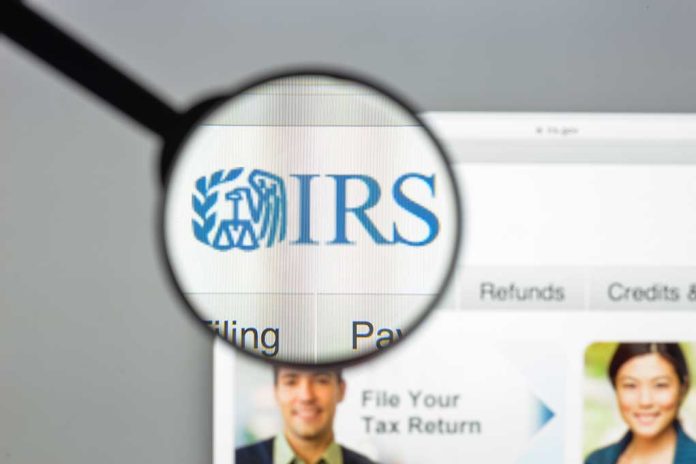
The IRS has slapped a June 16 deadline on entrepreneurs, investors, and side-hustlers for second quarter tax payments, threatening financial penalties for those who miss this critical date.
Key Takeaways
- Second quarter estimated tax payments for 2025 are due by June 16, 2025, with penalties applied for late payments
- This deadline primarily affects self-employed individuals, investors, retirees, and those with income not subject to withholding
- Taxpayers must pay taxes throughout the year on a pay-as-you-go basis, either through withholding or quarterly estimated payments
- To avoid penalties, taxpayers should owe less than $1,000 at tax time or pay at least 90% of their expected 2025 tax
- Electronic payment methods are recommended and include IRS Online Account, IRS Direct Pay, and EFTPS
June 16 Deadline Looms for Non-Wage Earners
The Internal Revenue Service has issued an urgent reminder for taxpayers whose income isn’t subject to standard withholding: your second quarter estimated tax payments for 2025 are due by June 16. This deadline particularly affects self-employed individuals, business owners, investors, and anyone receiving substantial income outside traditional employment structures. Those who fail to meet this deadline face potentially significant underpayment penalties, adding financial strain to those already navigating the complexities of self-employment taxation under the Biden-Harris administration’s regulatory environment.
“Estimated tax payments for the second quarter of 2025 are due on Monday, June 16, with taxpayers who fail to pay on time facing underpayment penalties,” stated IRS, the Internal Revenue Service (IRS) in a June 6 statement.” – Internal Revenue Service (IRS).
Unlike traditional employees who have taxes automatically withheld from each paycheck, individuals with non-wage income must calculate and submit their estimated taxes four times per year. The second quarter payment covers income earned from April 1 through May 31, with additional deadlines set for September 15, 2025, and January 16, 2026. This pay-as-you-go system reflects the IRS’s insistence that taxes be paid throughout the year as income is received, not just during annual filing season—a burden that falls heavily on small business owners and entrepreneurs.
Who Needs to Pay Estimated Taxes
The estimated tax requirement applies to a wide range of taxpayers who operate outside traditional employment structures. Individual taxpayers generally must make quarterly payments if they expect to owe $1,000 or more when filing their return. For corporations, this threshold drops to just $500. This includes self-employed individuals, gig workers, independent contractors, rental property owners, and investors receiving substantial dividend or interest income. Additionally, retirees without sufficient tax withholding from pension payments often fall into this category.
“WASHINGTON — The Internal Revenue Service today reminded taxpayers of the 2023 second quarter estimated tax deadline,” stated IRS, Internal Revenue Service –
Beginning in 2023, the IRS expanded its reporting requirements for digital payment platforms, requiring them to issue Form 1099-K for users receiving more than $600 in electronic payments. This change has swept many casual sellers and side-hustlers into the tax system who previously flew under the radar. Small business advocates have criticized this threshold as excessively low and burdensome for casual online sellers, yet another example of overreaching government regulation affecting everyday Americans trying to make ends meet during persistent inflation.
How to Avoid Underpayment Penalties
To avoid costly penalties, taxpayers must satisfy one of three conditions: owe less than $1,000 in tax when filing their return, pay at least 90% of the tax for the current year, or pay 100% of the tax shown on their previous year’s return (110% for higher-income taxpayers). The penalty system essentially punishes those who fail to accurately predict their annual income or who experience substantial income fluctuations—a common scenario for entrepreneurs and small business owners in today’s volatile economy.
The IRS strongly encourages electronic payment methods, which provide immediate confirmation and reduce processing time. Options include the IRS Online Account, Direct Pay system, and the Electronic Federal Tax Payment System (EFTPS). For corporations, electronic funds transfers are not merely recommended but required by law for federal tax deposits.
“Payment by check or money order made payable to the \”United States Treasury\” is also an option.” stated Internal Revenue Service.
Special rules apply to certain taxpayer groups, including farmers, fishermen, and recent retirees, who may qualify for alternative payment schedules. Taxpayers uncertain about their obligations can use the Tax Withholding Estimator on the IRS website, though many independent workers find the complexity of self-employment taxation requires professional assistance—an additional expense that employed workers don’t face. President Trump’s administration had begun simplifying tax regulations before leaving office, but many of these reforms have since been reversed or complicated by current policies.





